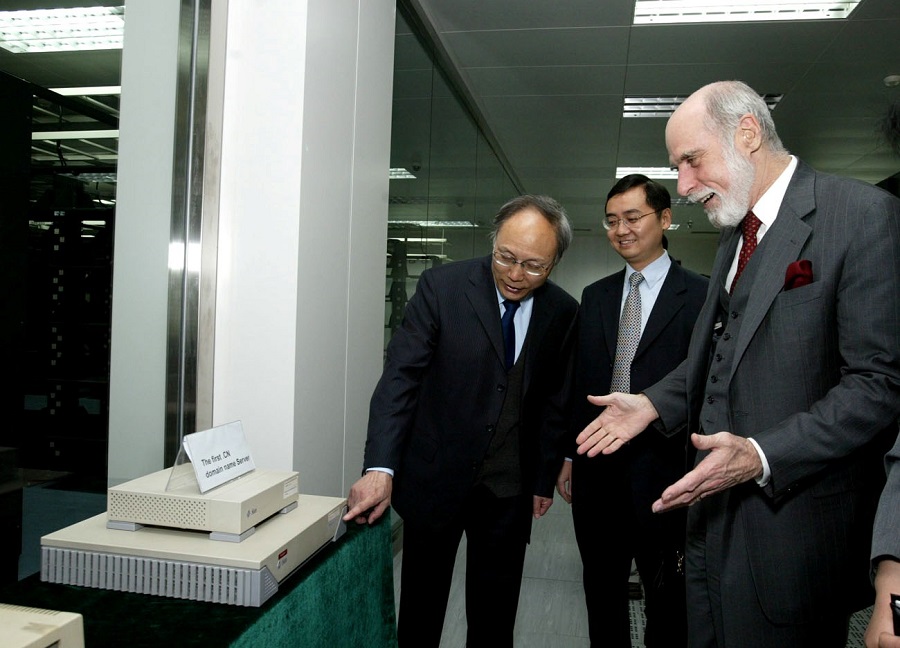Profile
Historical Founding Place
Computer Network Information Center (CNIC) of the Chinese Academy of Sciences (CAS) has a long history of providing research network, data, computing, resource planning services to the scientific communities, and Internet-based science outreach service to the general public. CNIC’s founding team contributed to China’s full-functional connection with the Internet in 1994, and participated in early open data initiatives of the CAS since 1980s.

Vint Cerf, one of fathers of the Internet, visited the first .CN domain name server @ CNIC
Established in March 1995, CNIC now operates China Science and Technology Network (CSTNet), China Science and Technology Cloud (CSTCloud), China Basic Science Data Center, Science Data Bank (ScienceDB), Virtual Science Museums of China (VSMC), and provides connectivity services such as Eduroam CN and Common Science and Technology Resource (CSTR) identification. In addition, CNIC operates information systems to support AAI, trust framework, data cloud, data storage, data analytics, HPC, AI computing, open research infrastructure, academia resource planning, website builder, continued education, videoconferencing, conference organization and other services.
CNIC has 14 R&D departments with research and service directions related to computer network and cloud computing, HPC and AI computing, data science and technology, management informatization, trust framework and Internet communication. CNIC actively builds academia-industry partnerships for federated services, and participates in multistakeholder organizations in and out of China. CNIC is the co-chair organization of APAN China, support organization of ICANN Beijing Office and CODATA China secretariat, co-host organization of the International Program Office of CODATA’s Global Open Science Cloud initiative, Vice President organization of China Internet Society and China Information Industry Association, Secretary General organization of China Supercomputing Innovation Alliance. To find its niche within CAS, CNIC maps out its blueprint as an informatization organization with engineering approach to support the development of next-generation information infrastructure for research, AI-ready data infrastructure for research, and software defined approach to support decision-making and science communication.



From left to right: CAS Informatization Plaza, building at CAS software Park (founding place), Huairou Park
